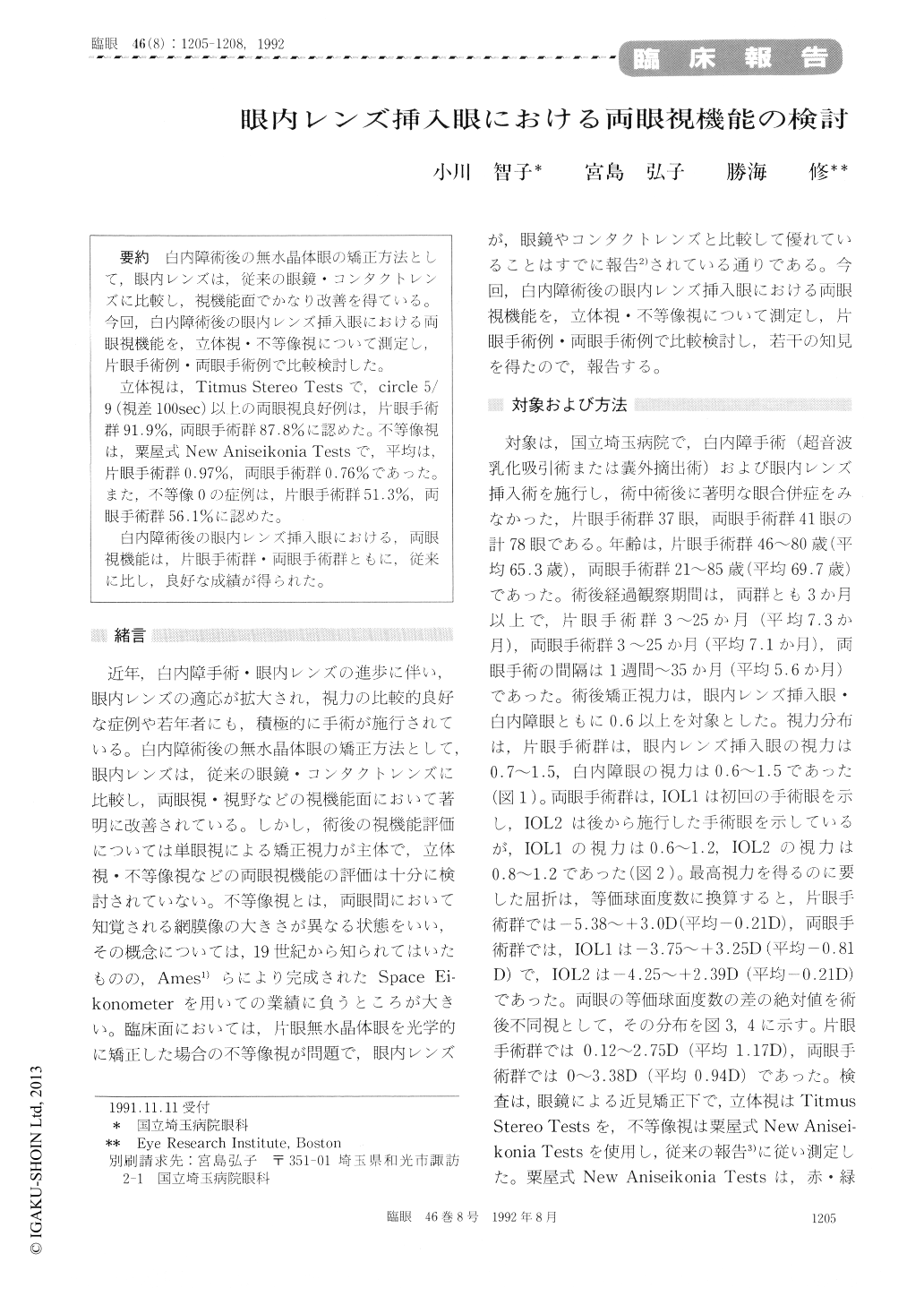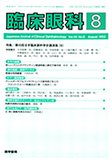Japanese
English
- 有料閲覧
- Abstract 文献概要
- 1ページ目 Look Inside
白内障術後の無水晶体眼の矯正方法として,眼内レンズは,従来の眼鏡・コンタクトレンズに比較し,視機能面でかなり改善を得ている。今回,白内障術後の眼内レンズ挿入眼における両眼視機能を,立体視・不等像視について測定し,片眼手術例・両眼手術例で比較検討した。
立体視は,Titmus Stereo Testsで,circle 5/9(視差100sec)以上の両眼視良好例は,片眼手術群91.9%,両眼手術群87.8%に認めた。不等像視は,粟屋式New Aniseikonia Testsで,平均は,片眼手術群0.97%,両眼手術群0.76%であった。また,不等像0の症例は,片眼手術群51.3%,両眼手術群56.1%に認めた。
白内障術後の眼内レンズ挿入眼における,両眼視機能は,片眼手術群・両眼手術群ともに,従来に比し,良好な成績が得られた。
We evaluated the stereoacuity and aniseikonia in78 subjects with posterior chamber intraocular lens(IOL), of whom 37 were in monocular and 41 werein binocular pseudophakic state. Stereoacuity wasassessed with Titmus stereo test and aniseikoniawith the new aniseikonia tests of Awaya.
The stereoacuity averaged 7.68 on the Titmuscircle, or 50 to 60 sec of arc, in both monocular andbinocular IOL subjects. Stereoacuity of 100 sec ofarc was seen in 34 patients, 92%, with unilateralIOL and in 36 patients, 88%, with binocular IOL. Inunilateral IOL patients, the aniseikonia rangedfrom 0 to 6% with a mean of 0.97. In bilateral IOLpatients, it ranged from 0 to 4% with a mean of0.76.
The above findings indicate that good binocularfunction is present in the majority of monocularand binocular pseudophakic patients.

Copyright © 1992, Igaku-Shoin Ltd. All rights reserved.


